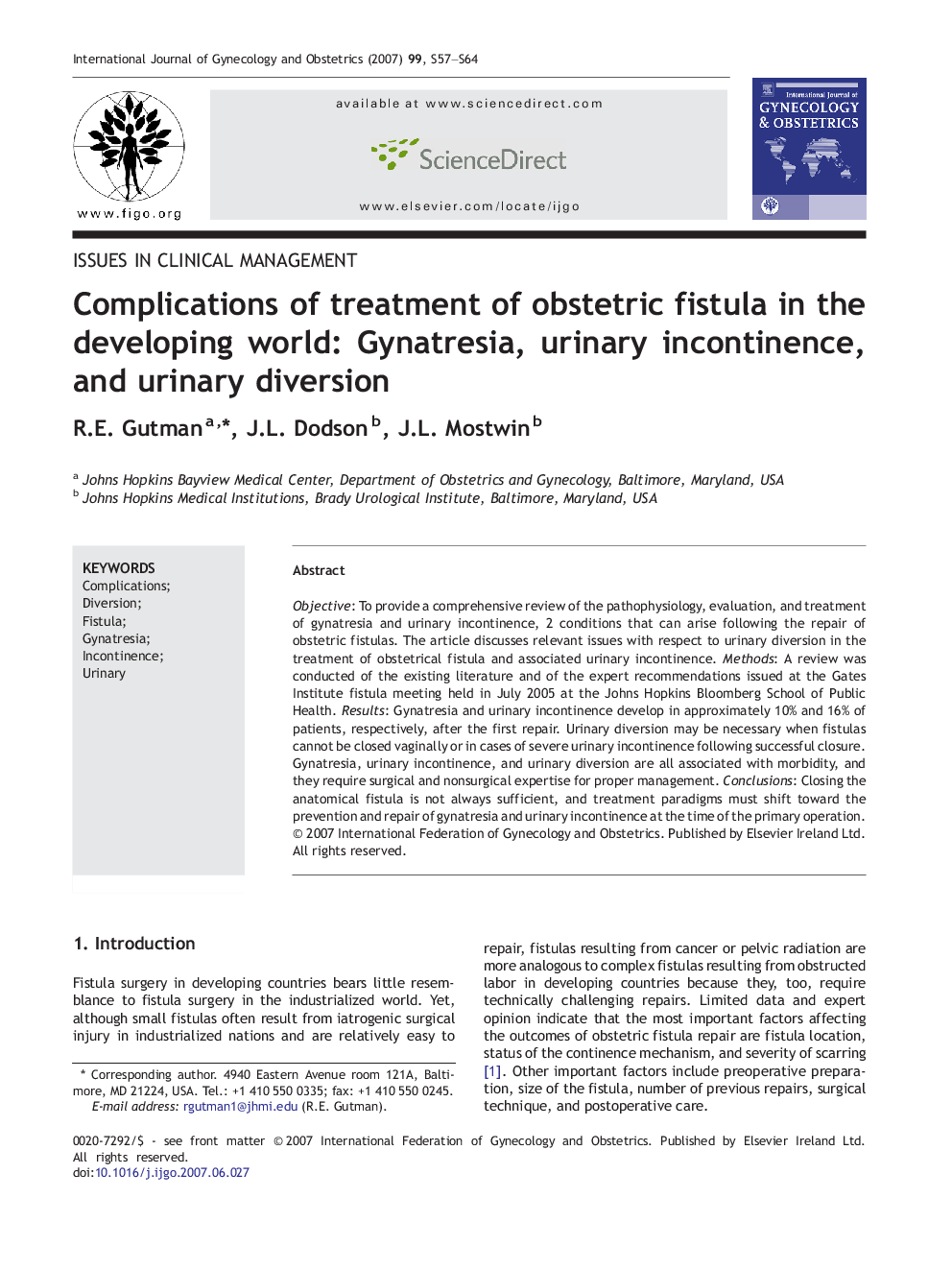| Article ID | Journal | Published Year | Pages | File Type |
|---|---|---|---|---|
| 3952054 | International Journal of Gynecology & Obstetrics | 2007 | 8 Pages |
Objective: To provide a comprehensive review of the pathophysiology, evaluation, and treatment of gynatresia and urinary incontinence, 2 conditions that can arise following the repair of obstetric fistulas. The article discusses relevant issues with respect to urinary diversion in the treatment of obstetrical fistula and associated urinary incontinence. Methods: A review was conducted of the existing literature and of the expert recommendations issued at the Gates Institute fistula meeting held in July 2005 at the Johns Hopkins Bloomberg School of Public Health. Results: Gynatresia and urinary incontinence develop in approximately 10% and 16% of patients, respectively, after the first repair. Urinary diversion may be necessary when fistulas cannot be closed vaginally or in cases of severe urinary incontinence following successful closure. Gynatresia, urinary incontinence, and urinary diversion are all associated with morbidity, and they require surgical and nonsurgical expertise for proper management. Conclusions: Closing the anatomical fistula is not always sufficient, and treatment paradigms must shift toward the prevention and repair of gynatresia and urinary incontinence at the time of the primary operation.
